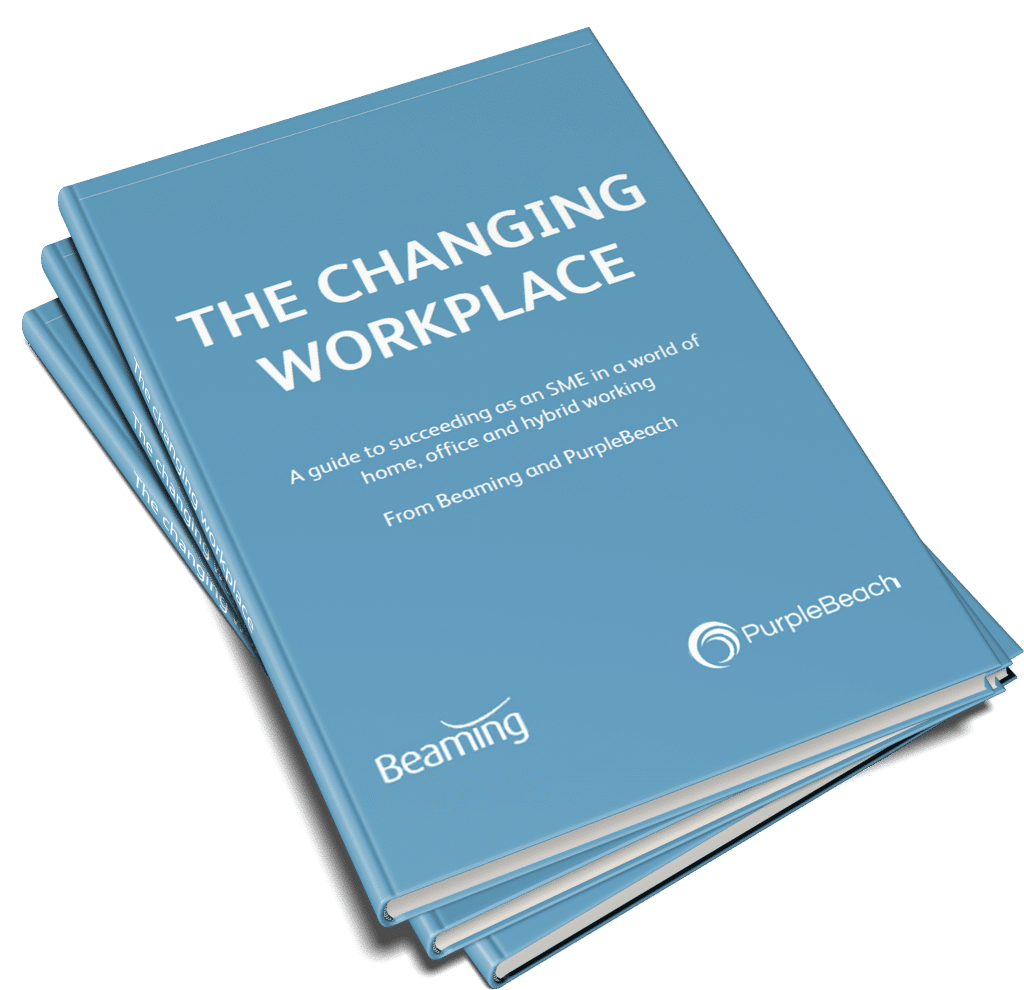Tips to boost home working productivity
Maintaining productivity with a workforce that’s been split into various “mini offices” is a new challenge many business leaders are facing. Sonia Blizzard, Managing Director of Beaming, shares her tips to boost home working productivity.
Part one: Separating work and life
Allowing home and office to interfere with each other equals distraction, frustration and an inability to enjoy either.
Help employees create a dedicated workspace.
Not everyone has a home office, or even a door to close. But it’s important to help employees confine their work to just one area of the home. If that area can’t be dedicated to work, for example the kitchen table, it’s important to help employees ‘shut down’ that area as they finish work. Some storage for work materials and equipment may be important.
Where possible, measure employees by results and allow them the freedom to adapt their routine.
Some roles need an employee to be ready and available throughout standard working hours. But in many the key thing is simply that the job gets done well and in a timely way. ‘Presentee-ism’ can be a hindrance here. If possible, allow people the freedom to adapt their routine to fit in with domestic duties and home-life pinch points. That way they can work when they have a clear head and are productive.
Watch out for overworking.
Without clear boundaries, work will spill over into the beginning and end of the day. The tendency for many employees when removed from the structure of an office routine is to overwork – especially so when many may feel insecure about their future. This can lead to inefficiency and burnout, so overwork needs to be addressed.
Help employees work well with their ‘new workmates’.
If their home is the new office, then those working there are also new workmates. It’s important to help employees talk openly about ways in which the needs of those at home interact with their own. There may be issues about privacy, bandwidth or communal space. Understanding what’s going on for your employees at home is vital, and there may be practical ways you need to help – for instance providing business broadband or by helping them schedule key calls for times when they will be uninterrupted.
Part two: Keeping in Touch
To stay productive, employees will need clear lines of communication and briefs that are clearer than ever. This goes for everything from boardroom-level discussions to routine work.
Communicate quickly.
Employees can no longer call out across the office to clarify or check something. But they can pick up the phone. They should be encouraged to do this to ask for help. It’s quick and effective. Don’t rely just on email or video meetings.
Be aware of ‘Zoom Fatigue’.
People report exhaustion after a long day of video calls, which may well be down to having to focus very hard at a semi-conscious level. Without body language to guide your conversation, you have to pay constant and intense attention to words instead. Plus, a video call with someone you’ve never met is still quite intimate, and even feels invasive to some. Ask yourself ‘does this need to be done on video?’. Suggest doing it over the phone. Maybe take a walk while you talk. The person on the other end might appreciate it even more than you do.
Encourage employees to block out time for concentrated work.
Employees will also need times of privacy to concentrate on work. It’s no longer possible to glance over the office and see that someone is obviously working intensively on something. Allow employees to block out time where they can be undisturbed. They should let people know when these blocks are. Some collaboration platforms allow people to set their status to ‘Do not Disturb’. An email will do too.
Remember that video meetings are still meetings.
Even without the meeting room, video conferences shouldn’t be treated with less professionalism. Everyone should be prepared, turn up on time and pay attention. Many people report that video meetings can be more draining, so keep them as short as possible, and end at or before the agreed time. Some participants may need to go straight into another call, and a series of calls back to back equals fatigue.
Keep those casual chats.
If your only interaction with colleagues is in a corporate setting you’re going to feel burnt out. Allow employees time during the week for quick, impromptu chats with workmates, as long as these are not excessive in number or length. Hearing about everyone’s shared experiences is reassuring and motivating, and can prevent feelings of isolation.
How are the UK's best workplaces adapting?
In this free guide for business managers, remote working experts and leaders of some of the UK’s best places to work give advice covering:
- How have the best workplaces adapted to home, remote and hybrid working?
- What should business leaders do to support employees through uncertainty?
- How can businesses bounce back better?
- What technology should we use to boost homeworking productivity?
Enter your email address and we’ll send “The Changing Workplace” straight to your inbox
